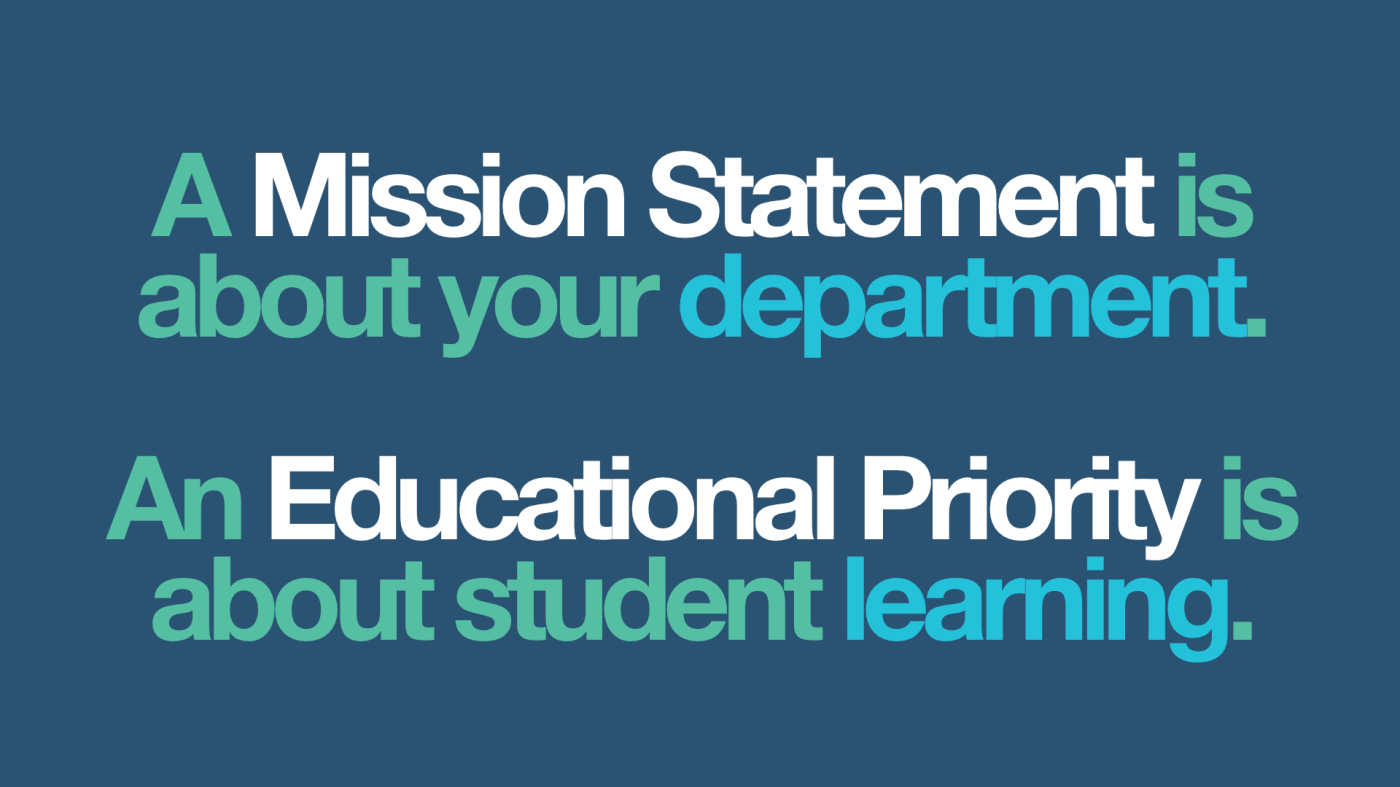In developing a residential curriculum, one of the first tasks a residence life department undertakes is the establishment of an educational priority. An educational priority is summative statement of what students will learn by their participation in a curriculum. An educational priority is broad, informed by research and theory, and contextualized to an individual campus and student population. A priority can be used as a measure to determine if a curriculum is successful in achieving its educational aims, and it provides a goal towards which students can reach.
An educational priority for a departmental curriculum is different from its mission statement. Unfortunately in practice, these two items can sometimes be conflated. Both of them are important, but they speak to different aims. So what’s the difference?
| Mission Statement | Educational Priority | |
| is about the department. | is about the student. | |
| Often mentions the “environment,” “student and customer service,” and other methods of delivering the educational experience (through dialogue, in community, etc.). | Focuses on the learning students will achieve. Students will… “learn,” “become,” “achieve,” and “be able to.” The “end goal” of the student learning experience. Curriculum is about learning. |
Mission statements are about a department. They direct the work of staff. They discuss the services a department provides, the aim of those services, as well as the quality and method of their delivery. Departmental missions include functions that are supportive of an educational function, but are focused on the organizational delivery of that educational function. The mission of a residence life department often states that doing “these things” will result in students being able to “do this” or “become that.”
Educational priorities are about students. They are statements about what students will and should learn. They guide the entire educational enterprise and the development of a curriculum. The assessment of an educational priority involves an assessment of a student’s knowledge, skills, and abilities. Curricula are built and assessed on their ability to achieve an educational priority.
Further resources about educational priorities in residential curricula:
Mission statements and educational priorities are distinct, but related. A department, through its mission, may seek to advance student learning, and hence an educational priority. In this sense, a mission statement could be considered primary to an educational priority. In other words, if your classroom isn’t set up for success or functioning well (achieving its mission), then you are not likely to be able to deliver a quality learning experience. If you aren’t delivering a quality learning experience, then students are not as likely to achieve what is set out in the educational priority. Conversely, although not as likely, a department could be failing in its mission statement and yet a student could still successfully learn and achieve an educational priority in spite of it.
When developing a mission statement and an educational priority, there are key words that can indicate whether the two concepts are being conflated. Mission statements often mention the “environment,” “student and customer service,” and other methods of delivering the educational experience (through dialogue, in community, etc.). Educational priorities, in contrast, should avoid these words and focus on the learning students will achieve. Educational priorities often start with statements that “Students will… ‘learn,’ ‘become,’ ‘achieve,’ or ‘be able to.’”
Educational priorities represent the “end goal” of the student learning experience. Mission statements represent the environment and the methods and means of delivering that learning.
Key Questions:
- Is your educational priority about student learning?
- Are there concepts or words in your educational priority that better fit in your mission statement?
- Who and what needs to be assessed in determining if you are achieving your educational priority?
